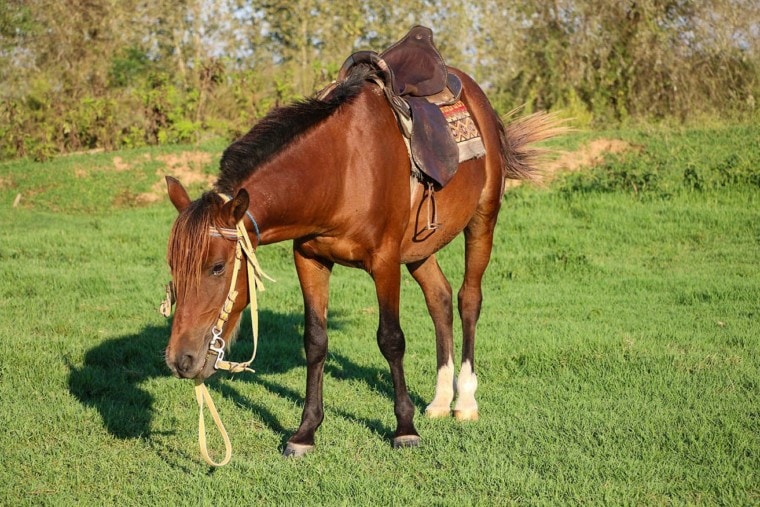
The equine world features a diverse range of horses, but centuries of selective breeding have produced a few rare treasures and hidden gems. We are interested in the rarest horse breeds in the world – those with bloodlines as old as they are scarce, and whose unique characteristics have captivated the hearts of enthusiasts, breeders, and equestrians worldwide. There are currently more than 350 horse breeds on the planet, and new ones are being developed every year. Some of these breeds are well-known across the world. However, others are so rare that very few people have ever heard of them.
Here are the 13 rarest horse breeds in the world.
The 13 Rarest Horse Breeds in 2024:
1. The Canadian Horse
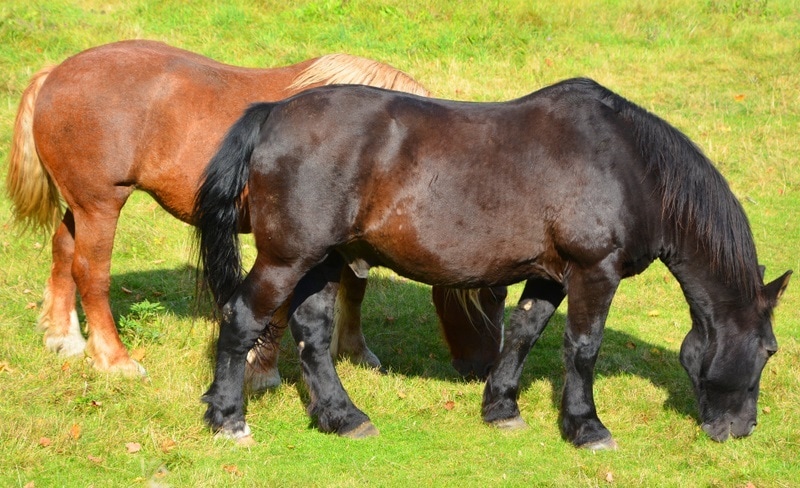
The Canadian horse is considered the national horse of Canada. They arrived more than 350 years ago, when the reigning monarch of France at the time, King Louis XIV, sent over a shipload of horses. In 1665, that part of Canada was known as New France and was primarily populated with his subjects.
Although the shipload of horses was comprised of many different breeds, they eventually mixed to become the Canadian horse. Modern-day Canadian horses are primarily used as showjumpers or racehorses because they are built fast and sturdy.
The U.S. Civil War almost decimated this population, and they are still trying to regroup all these years later. It was this breed that was used predominantly in combat because of their resilience. Today, there are 6,000 registered Canadian horses globally. They are still in danger of extinction because there are only 150 to 500 new registrations each year.
2. Dales Pony
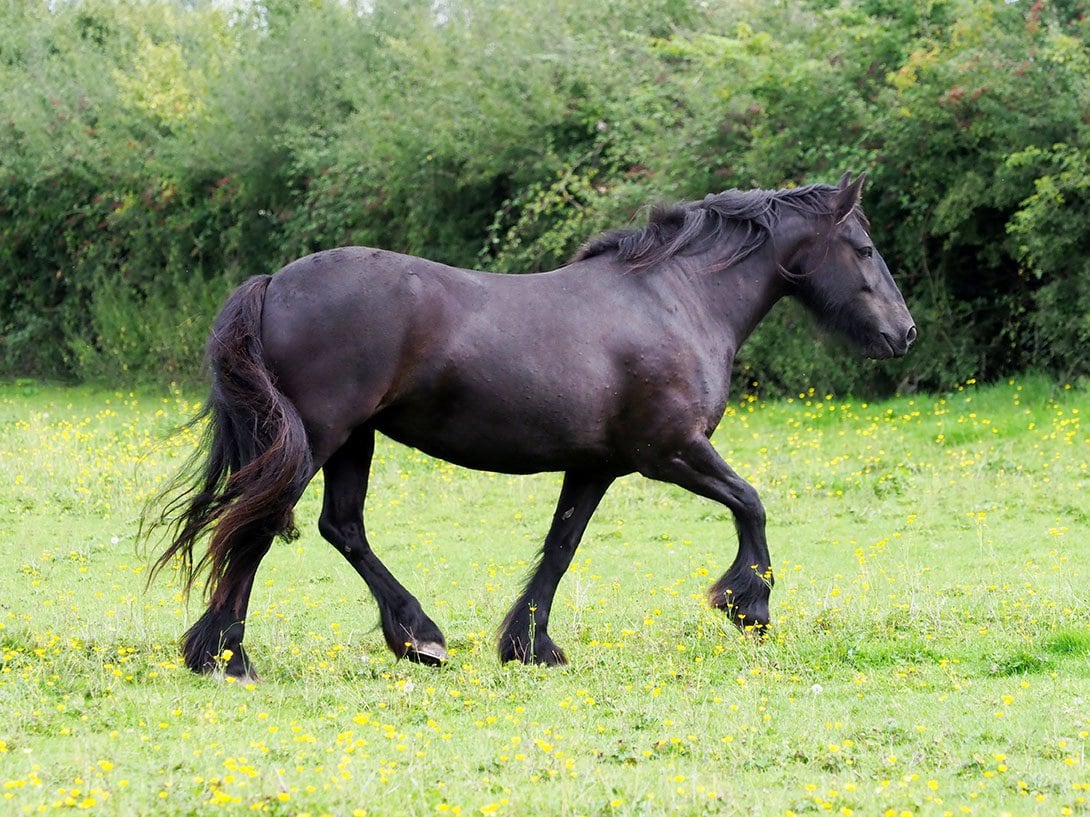
The Dales Pony originates from the Dales in the north of England. They are a short, stocky breed and were primarily bred for use by lead miners. They helped carry the ore out of the mines and the shipping ports on the North Sea.
These ponies are surprisingly fast, elegant, and agile, which is why they are frequently used as harness horses. Another war is to blame for the meager 300 horse population that we currently have today. World War II took this breed right to the brink of extinction. The English Army confiscated these hard-working ponies for heavy-duty work, and very few returned.
Dales ponies come mainly in black, reminiscent of their mining days. They can also be found in brown, gray, bay, and roan.
3. Newfoundland Pony
The Newfoundland Pony gets their name from their most recent breeding grounds, Newfoundland, Canada. They can also be found in the Labrador province. They are initially from northern England, Scotland, and Ireland. They were primarily used as draft horses after they were transported over the ocean for Western settlers.
These horses are a sweet and muscular breed. Nowadays, they are mostly used as riding and show ponies. They were practically brought to extinction due to horse slaughtering and mechanization. Now, they are critically endangered, with a population somewhere between 200 and 250.
4. Akhal-Teke
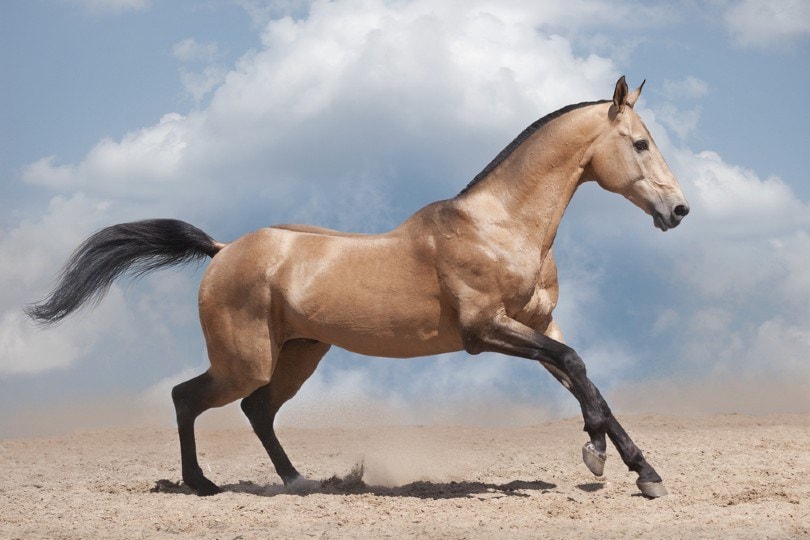
The Akhal-Teke is likely to be the best-known horse on this list because of their stunning coat. They come in bay, chestnut, black, grey, and cream. The cream is the most popular because it brings out the shiny, metallic characteristic that this horse’s coat is known to have.
The Akhal-Teke originates from Turkmenistan, where they are recognized as the national horse breed. They were first developed thousands of years ago because of the desertification in Central Asia, so nomadic tribes could travel quickly across long distances. They are one of the oldest existing horse breeds that we have today.
The Akhal-Teke is threatened due to inbreeding, even though they were prized for many years in Central Asia.
5. American Cream Draft Horse
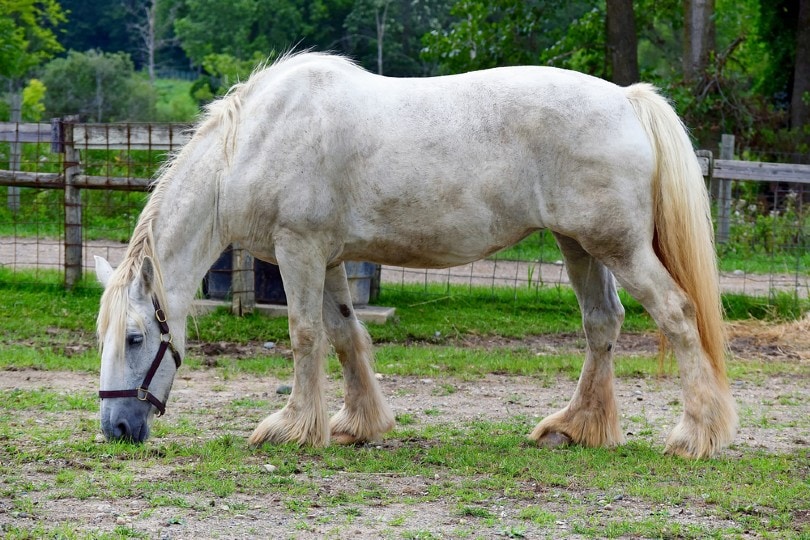
Unlike most other horse breeds of today, the American Cream horse only has one color: a beautiful champagne-cream-colored coat with amber eyes. They have a beautiful appearance and are wonderful show horses when cared for properly. Even with all this beauty, they are still becoming an endangered breed due to mechanization in the agricultural industry.
These horses were only developed in the 20th century, which is part of the reason for their downfall. Their short history right around the time that the agricultural industry became mostly mechanized led to low breeding popularity. There are currently only 2,000 of these horses left in the world, even though they are the only draft breed horse native to America.
6. Caspian Horse
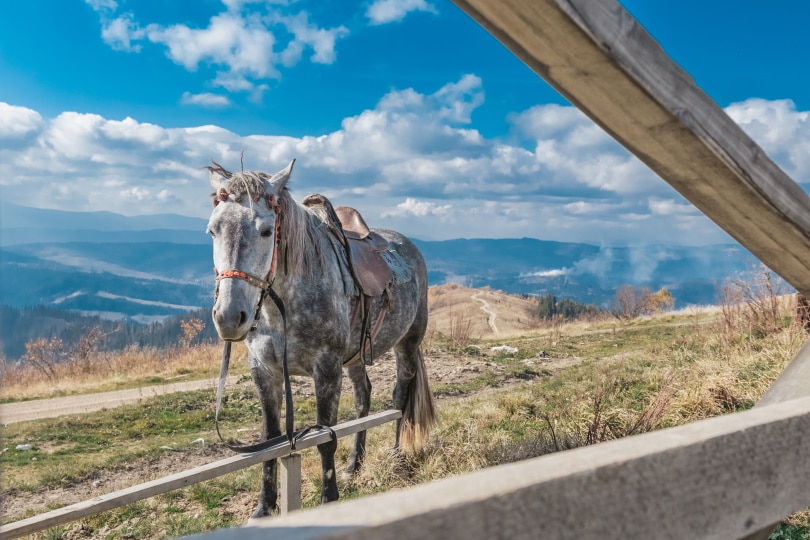
The Caspian horse is another one of the oldest breeds in the world. Their likeness has been found in artwork dating back to about 3,000 B.C. The breed originates from Iran, where they are currently considered a national treasure and are heavily protected. They have lithe and muscular bodies and weigh between 400 to 600 pounds, standing at around 11 HH.
The Caspian horse was believed to be extinct for about 1,300 years. However, in 1965, researchers made a stunning discovery in the wilds of northern Iran. Since then, these horses have been dutifully protected and promoted, and their numbers are steadily on the rise. There are still fewer than 2,000 of them globally, but conservation efforts promise more each year.
7. Suffolk Punch Horse
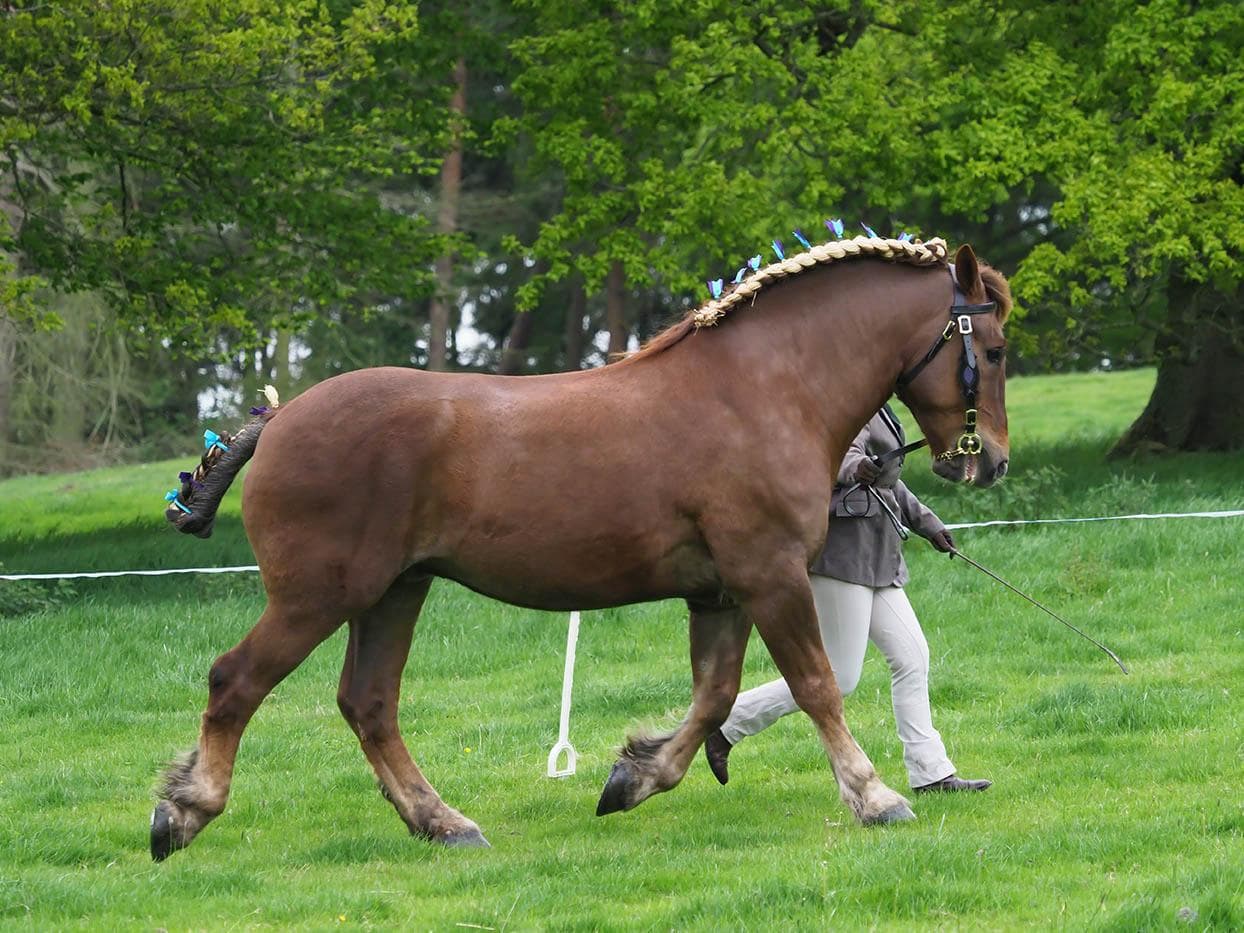
Horses have been used for challenging labor for thousands of years. Draft horses came about because of this, and the Suffolk Punch was one of the first of these strong draft horses. They date back to the 18th century, where they were developed in Suffolk county in England to plow through the area’s heavy clay soil. They are healthy, docile, and have a great deal of stamina.
Due to all these traits, the Suffolk Punch horse was largely drafted into the military in World War II. After the war, they were replaced by machines, and their breeding fell to the wayside. There are only about 600 of them in the U.S. and 200 in the U.K., putting them into the critically endangered state.
8. Hackney Horse

The Hackney horse is a proud and elegant breed. They are athletes through and through and are known for their ballerina-like composure in the show ring. They perform excellently at showjumping and dressage and can trot for long periods of time at impressive speeds.
The Hackney horse was developed in the 14th century in Norfolk, England. They were meant to pull the carriages of the rich and wealthy, quickly becoming a symbol of the most affluent members of society. In the 19th century, they were customarily harness racers but fell out of the spotlight as stricter horse requirements made the breed unfavorable in the races.
Since they no longer have an elegant or athletic purpose, their population has fallen to a critical state. There are fewer than 300 of these horses left in the world.
9. Eriskay Pony
Close your eyes, and imagine the wind sweeping across the highland plains of Scotland and a horse standing at the top, the breeze ruffling their hair. You are probably picturing something close to the Eriskay pony.
They were first known as the Western Isle Pony, native to the Hebridian Islands of Scotland. They have adapted to the cold, harsh conditions in the far north of the U.K. and are still known for their overall calm temperament.
These ponies are important to the islanders. They have been used for many years to promote their way of life, pulling carts, carrying collected seaweed, and taking kids to school. Now their popularity has fallen as people have faster vehicles to get these jobs done. Fewer than 300 of these horses are left.
Luckily, they are excellent for equine therapy and are making a comeback due to their docile personalities and conservation efforts.
10. Shire Horse
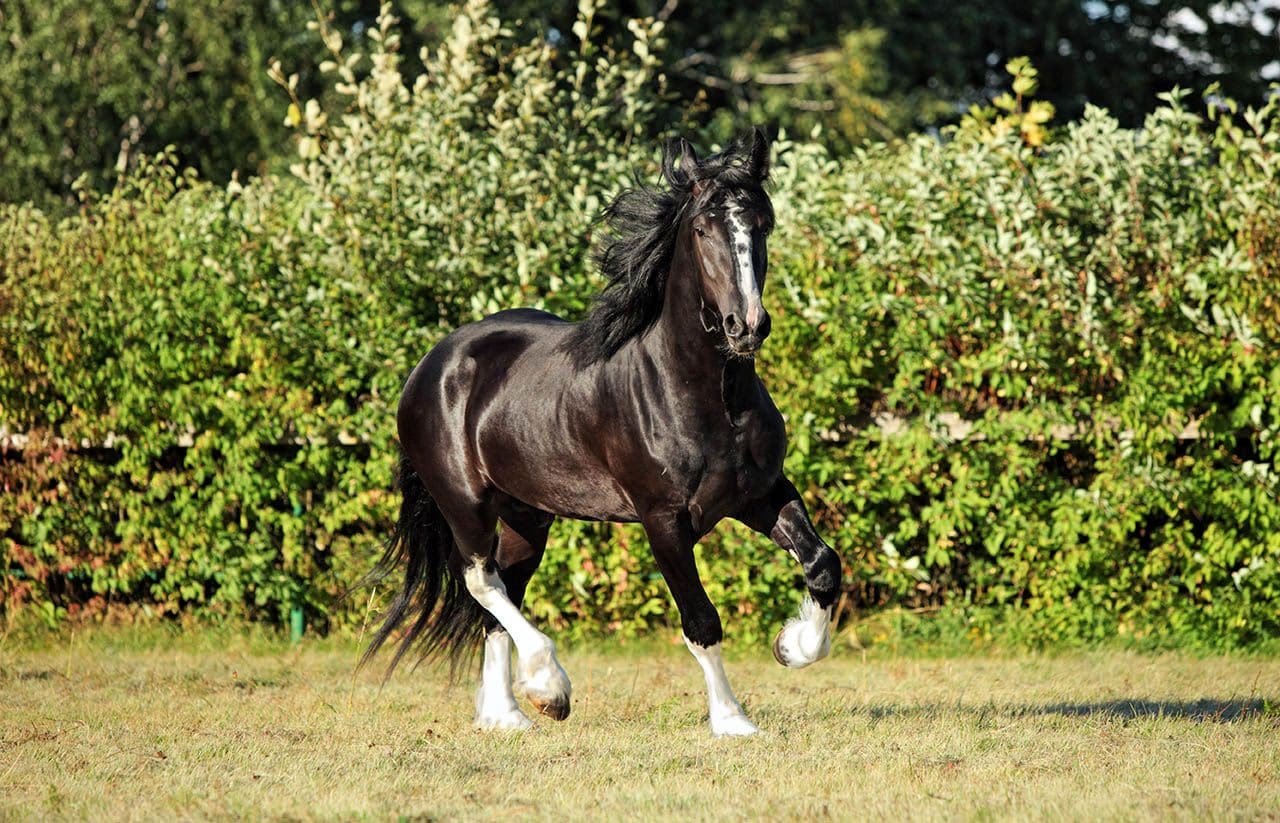
Although we might think of New Zealand when we imagine the Shire, these horses are quintessentially British. They were hailed as working-class heroes and were used for various jobs, including farm work, garbage collection, military use, and pulling the royal carriages.
Shire horses have placid temperaments and a robust build. They were the inspiration for “War Horse/ in George Orwell’s book, “Animal Farm.” Sadly, regardless of their past fame, they are currently considered critically endangered. They are not yet protected in Britain and could disappear entirely within 10 years if not conserved.
11. Exmoor Pony
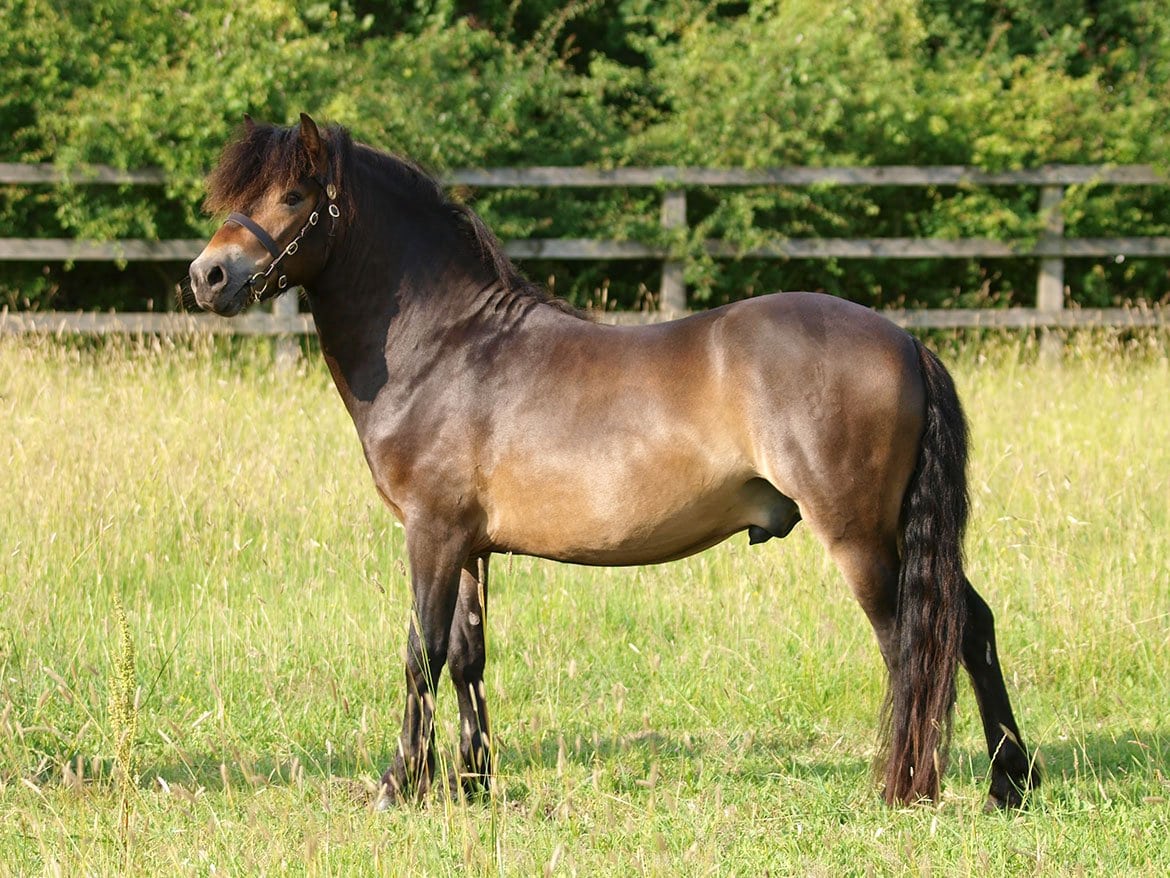
The Exmoor Pony is another native U.K. horse. They originate from Cleveland, England, and are thought to be one of northern Europe’s ancient horse breeds. This belief is due to their genetic difference, proving a primitiveness when compared to other horse breeds.
Exmoor ponies are best kept in cooler areas that experience winter conditions. They have coarse hair and a double coat to keep them warm and waterproof. They were used for many jobs in the past, and like many others, mechanization has largely replaced them. There are currently fewer than 800 of these ponies globally, with most of them located in England.
12. Cleveland Bay Horse
The Cleveland Bay horse was bred in the same area as the Exmoor pony but is seemingly not related in any way. They have muscular, slender bodies instead of the stoutness of a pony. Across the world, there are thought only to be about 900 of these horses in existence. They are considered to be one of Britain’s oldest native horse breeds, even with much older breeds having been brought in later.
13. Sorraia

Sorraia horses were virtually unknown to the wider world until the 20th century. They are native to the Iberian Peninsula, primarily from Portugal. These are thought to have been one of the oldest indigenous horse breeds that lived wild on the peninsula. Cave paintings have been found that support this idea.
Sorraia horses are a hardy and intelligent breed with a grulla coloring. A couple of breeders in their native area work hard to preserve them, but there are still only 200 left in the world and only in Portugal and Germany.
Featured Image: MAVRITSINA IRINA, Shutterstock







